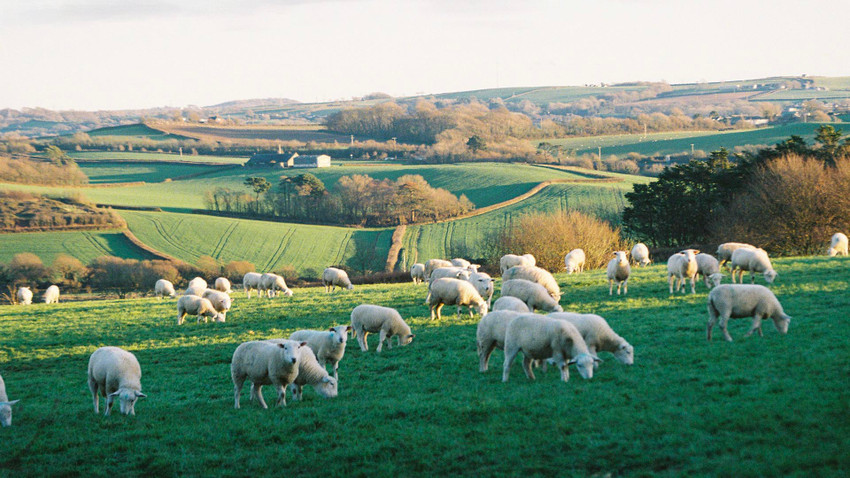Coppice Worker David Ewer Uses Silky to Make Sheep Hurdles and for Woodland Management
Coppicing is a traditional method of woodland management. Coppicers cut down a tree to a stump, which encourages new shoots to grow from the stump or roots in many species of trees. It’s a little bit like pinching the tops of your tomato plants to get them to branch out.
David Ewers, a professional coppice worker from Okeford Fitzpaine in the south of England, says Silky saws are the perfect tools for the job when it comes to coppicing.
“We keep the root stock, which is old, and rejuvenate the wood above,” said Ewers. “Most British wildwoods are the product of coppicing, which increases regrowth and gives us more materials in the future. Coppicing, which comes from the French coup, or cut, was done by wildlife in the past, but now humans do the coppicing.”
When coppicers cut the tree and leave the root, it produces what Ewers calls “a good-sized rod” he can use for making sheep hurdles. Historically, hurdles were three feet high, six feet long posts carried by shepherds to corral their sheep at night. Hurdles were also used on farms as barriers. Nowadays they’re more frequently found in people’s gardens, and they’re used as beams to support thatched roof houses.
According to Ewers, most of England’s hardwoods–oak, ash, sycamore, hazel as well as eucalyptus–will all coppice. Hazel regrows on a seven-year cycle. Sweet chestnut takes closer to 15 years to regrow big enough to use for fence posts, and up to 25 years for gate posts.
Coppicing is a traditional art that’s scarcer in modern times. Ewers found coppicing because he’s a self-proclaimed cheapskate. “I put a wood burner in my home and wanted free firewood,” said Ewers. “A local gamekeeper invited me to come round and said he’d show me where I could get some. We went into the woods in his Kubota. He took me to a stand of trees and told me to cut whatever I wanted and to leave the slash for the wildlife.”
Ewers was working as a milk man at the time. He had seen a man on his milk delivery route making hurdles and deck chairs. “I was cutting all this wood and thought that maybe I should make some things out of it, not just burn it all.” said Ewers. "I asked him for advice.”
That gentleman was the chair of the Dorset Coppice Group. He advised Ewers to buy a book and join the Dorset Coppice Group. He did, and coppicing became Ewer’s new hobby.
“Sometimes when you’re working in the woods, there’s no reason to fire up a chainsaw–you just need a hand saw,” said Ewers. At first he bought cheap saws from the supermarket he says didn’t last, blunted easily, and didn’t cut that well to start with. Then an arborist friend introduced Ewers to Silky.
“There is a reason everyone loves Silky saws–they work!” said Ewers.
Since he bought his Silky Gomtaro 270, he’s used it everyday. Ewers says it’s amazing how sharp it is and how long it stays sharp. He gets a year or two out of a blade, and though the saw was more expensive than what he purchased previously, he feels it’s a great value. He encourages people who are eyeing a Silky that haven’t pulled the trigger to get over the sticker shock. “The replacement blade is cheaper than a replacement for my circular saw blade,” said Ewers. “I bought the one that had a replaceable blade thinking I’d need to replace it frequently, but I don’t.”
Silky saws are one of the many tools Ewer uses as a full time coppicer. And he keeps his Silky with him all the time. “I have it on my belt,” said Ewers. “I not only use it to cut off bits and pieces when coppicing, but I use it to take the ends of the hazel wood when I am making woven frame hurdles and I need to trim the ends close to the uprights. The thin Silky blade cuts on the pull, which is precise and clean. I can get close to the uprights without nicking them.”
a sheep hurdle in the process of being made
In 15 years of coppicing, Ewers says he’s learned a lot, and he’s still learning. He just finished a coppice area this year that he coppiced eight years ago. “The fauna coming up underneath compared to last time I was there is phenomenal” said Ewers. “The bluebells are amazing right now, and I can’t wait for orchid season.”
Ewers says that Silky helped him understand the value of having the best tools and the right tools. That may have led to some marital discord in the Ewer household. According to Ewers, his wife doesn’t have the same appreciation for his tool purchases, so he’s taken to hiding them in his offsite workshop.
“I’ll eventually get caught,” chuckled Ewers. “I just hope she doesn’t sell my tools when I’m gone for what I told her I’d paid for them!”
Silky not only lets Ewers do his job, but it lets him live a woodsman lifestyle and make a living at the same time. “I’m never gonna get rich in the traditional sense doing what I do,” said Ewers, “but I am rich in so many other ways.”
...a load of sheep hurdles ready for delivery! Follow @dave_naturalwood

